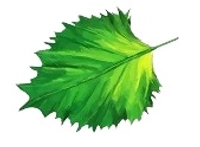Transform your indoor space with the stunning Schefflera Variegated Plant. Known for its distinctive, glossy leaves with creamy white and green patterns, this plant adds a touch of elegance to any room. Native to the tropical regions of Australia and the Pacific islands, the Schefflera Variegated Plant is not only beautiful but also easy to care for, making it an ideal choice for both beginners and experienced plant enthusiasts.
Indoor Benefits
- Air Purification: The Schefflera Variegated Plant is a natural air purifier. It helps remove toxins such as benzene, formaldehyde, and toluene from the air, improving indoor air quality.
- Aesthetic Appeal: With its vibrant, variegated leaves, this plant enhances the visual appeal of your home or office. It brings a touch of nature indoors, creating a refreshing and calming atmosphere.
- Stress Reduction: Indoor plants like the Schefflera Variegated Plant have been shown to reduce stress levels and promote relaxation, making them perfect for living spaces, bedrooms, and offices.
- Humidity Regulation: This plant helps maintain optimal humidity levels, which is beneficial for skin and respiratory health, especially in dry indoor environments.
Plant Care Instructions
- Light: Place your Schefflera Variegated Plant in bright, indirect sunlight. It can tolerate lower light conditions but will thrive best in well-lit areas.
- Watering: Water the plant when the top inch of soil feels dry. Avoid overwatering, as it can lead to root rot. Reduce watering frequency in the winter months.
- Soil: Use a well-draining potting mix. A mix designed for houseplants with added perlite or sand works well.
- Humidity: This plant prefers moderate humidity. If your home is very dry, mist the leaves occasionally or use a humidity tray.
- Temperature: The Schefflera Variegated Plant thrives in temperatures between 60-75°F (15-24°C). Keep it away from cold drafts and direct heat sources.
- Fertilizing: Feed the plant with a balanced liquid fertilizer every 4-6 weeks during the growing season (spring and summer). Reduce feeding in fall and winter.
Common Problems and Solutions
- Yellowing Leaves: This is often a sign of overwatering. Ensure the soil is well-drained and allow it to dry out between waterings.
- Brown Tips on Leaves: Low humidity or excess salts in the water can cause leaf tips to turn brown. Increase humidity levels or use distilled water for watering.
- Pests: Watch out for common pests like spider mites and mealybugs. Treat infestations with insecticidal soap or neem oil, and wipe the leaves with a damp cloth to remove pests.
- Slow Growth: Insufficient light or nutrients can cause slow growth. Move the plant to a brighter location and ensure regular feeding during the growing season.
Please Note: Images are for reference purposes only. Actual product may vary in shape or appearance based on climate, age, height, etc. The product is replaceable but not returnable.
